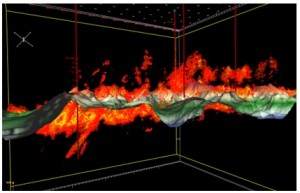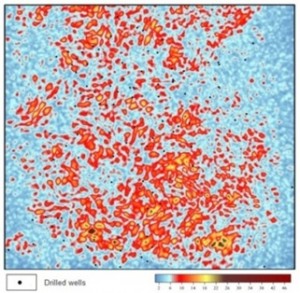CSPD – Fundamental Approach
|

4DPRM Technologies Team presents revolutionary software for Seismic Exploration based on Scattered Waves (Scattered Waves Seismics ).
The software uses the technique of separating 2D/3D seismic data into reflected waves and scattered waves. The original separation idea, which is based on characteristic features of reflection and scattering, is the kernel of the CSPD method (Common Scattering Point Dip).
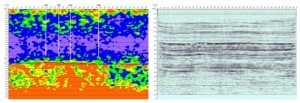
Tight oil. Bazhen formation. CSPD-diffractors (left) and SCPD-reflectors (right) time sections
The Processing of Scattered Waves Seismic is supported by the software 2D/3D CSPD-PSTM Pre-Stack Time Migration for Scattered Wave Seismic.

Diagrams of 3D seismic data processing. For conventional– left, CSPD method – right.

A – CSPD-diffractors and CSPD-reflectors cube combination. B – forecast map of reservoir distribution zones (wells with inflows of oil – black, water – blue, without inflow – white).

A – CSPD-reflectors and CSPD-diffractors cube combination. B – forecast map of fractured reservoirs (wells with inflows of oil – black, water – blue, without inflow – white).
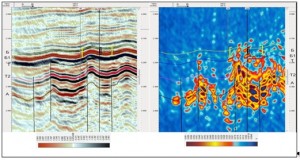
Reflectors (left) and diffractors (right) time sections of the Bazhen formation (Tight oil)
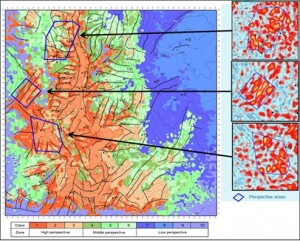
Perspective oil reservoirs map of Bazhen formation (Tight oil ) based on cluster analysis
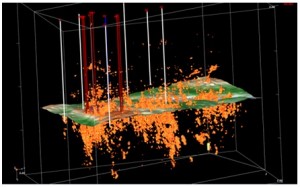
3D view of CSPD-diffractors cube
The CSPD method dramatically changes the approach to resource estimation both in newly investigated and being developed oilfields.
The CSPD method is highly efficient in detecting fractured reservoirs by scattered waves. The method has an excellent potential for detection of fractured reservoirs in deep horizons.
The CSPD method follows the strict solution of the inverse problem aimed at separation of the scattered and reflected components out from the complete seismic wave field. The accuracy of fractured reservoir forecast exceeds 80% by the results of data processing for 20,000 kilometers of 2D seismic lines and more than 5000 square kilometers for 3D seismic prospecting.
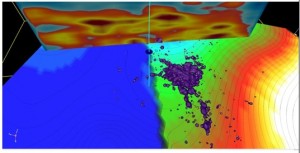
3D view of CSPD-diffractors cube with energy cub of microseismic events
The results of CSPD-PSTM seismic data processing are:
- SEG-Y CSPD-diffractors cube
- SEG-Y CSPD-reflectors cube
The CSPD-PSTM program uses a specialized computer cluster with not less 10 Teraflops performance and 4 Terabyte mainframe memories.

3D view of CSPD-diffractors cube, CSPD-reflectors cube and microseismic events

3D view of CSPD-diffractors cube with energy cub of microseismic events


